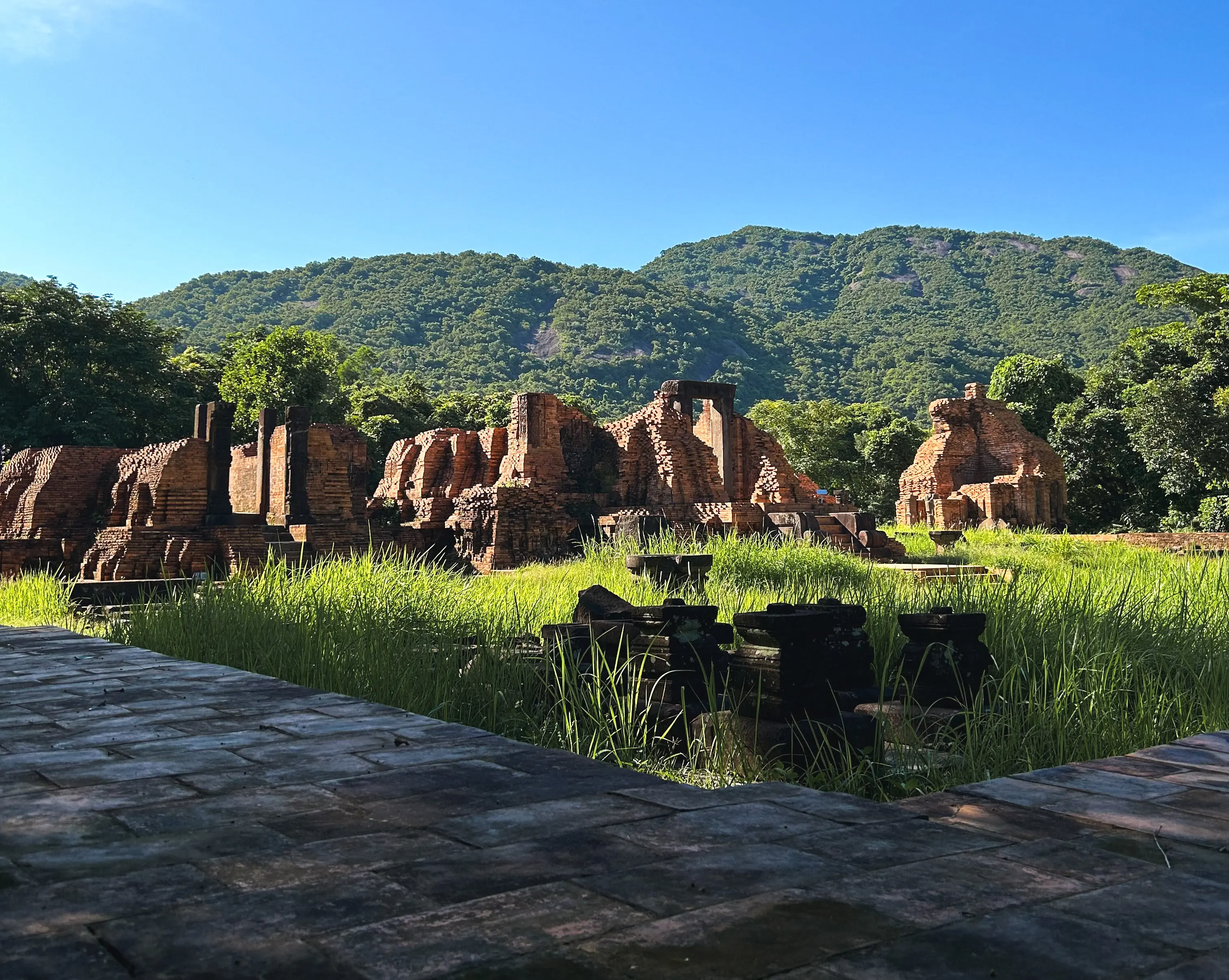
My Son Sanctuary: A Perfect Day Trip from Da Nang or Hoi An
The following blog is based on a personal visit to My Son Sanctuary, with authentic photos from the site and accommodation recommendations from firsthand experience.
Step back in time at My Son Sanctuary, one of Vietnam’s most significant archaeological sites. This guide covers everything from the site’s fascinating history to practical tips for making the most of your visit from Da Nang or Hoi An.
Table of Contents
- Historical Background
- Planning Your Day Trip
- Exploring the Sanctuary
- Cultural Performances
- Practical Tips
- Conservation Efforts
- Where to Stay
- Final Thoughts
- Best For
- Sample Itinerary
- Frequently Asked Questions
My Son Sanctuary: A Perfect Day Trip from Da Nang or Hoi An
The following blog is based on a personal visit to My Son Sanctuary, with authentic photos from the site and accommodation recommendations from firsthand experience.
When exploring central Vietnam, the ancient Hindu temple complex of My Son Sanctuary offers a fascinating glimpse into the region’s rich cultural heritage. This UNESCO World Heritage Site makes for an excellent day trip from either Da Nang or Hoi An, allowing travelers to step back in time and explore Vietnam’s ancient Champa civilization. This guide covers everything you need to know for a memorable visit.
Best For
- History enthusiasts interested in pre-Vietnamese civilizations and Hindu influence in Southeast Asia
- Photography lovers seeking atmospheric ruins and unique architectural details
- Cultural explorers looking to understand the diverse heritage of Vietnam
- UNESCO site collectors adding to their World Heritage experiences
- Early risers who can enjoy the site with fewer crowds and beautiful morning light
Historical Background
The Champa Kingdom
My Son Sanctuary was built by the Champa Kingdom, which ruled central and southern Vietnam from the 4th to the 13th century AD. The Cham people were skilled maritime traders with Indian, Malaysian, and Indonesian influences who established their kingdom along Vietnam’s central coast.
Religious Significance
My Son served as the most important religious center of the Champa Kingdom. Dedicated primarily to the worship of the Hindu god Shiva (known as “Bhadresvara” by the Cham), these brick temples reflected the spiritual beliefs imported from India that took root in Southeast Asia.
Construction and Architecture
The earliest temples at My Son date back to the 4th century, with construction continuing for the next ten centuries. Built using distinctive red brick and sandstone, the structures showcase remarkable architectural techniques:
- The bricks were set without mortar, with the exact binding method remaining somewhat mysterious to modern archaeologists
- Elaborate sandstone reliefs depicting Hindu deities, mythological scenes, and daily life
- Traditional Cham towers (kalan) with distinctive tiered roofs pointing toward the heavens
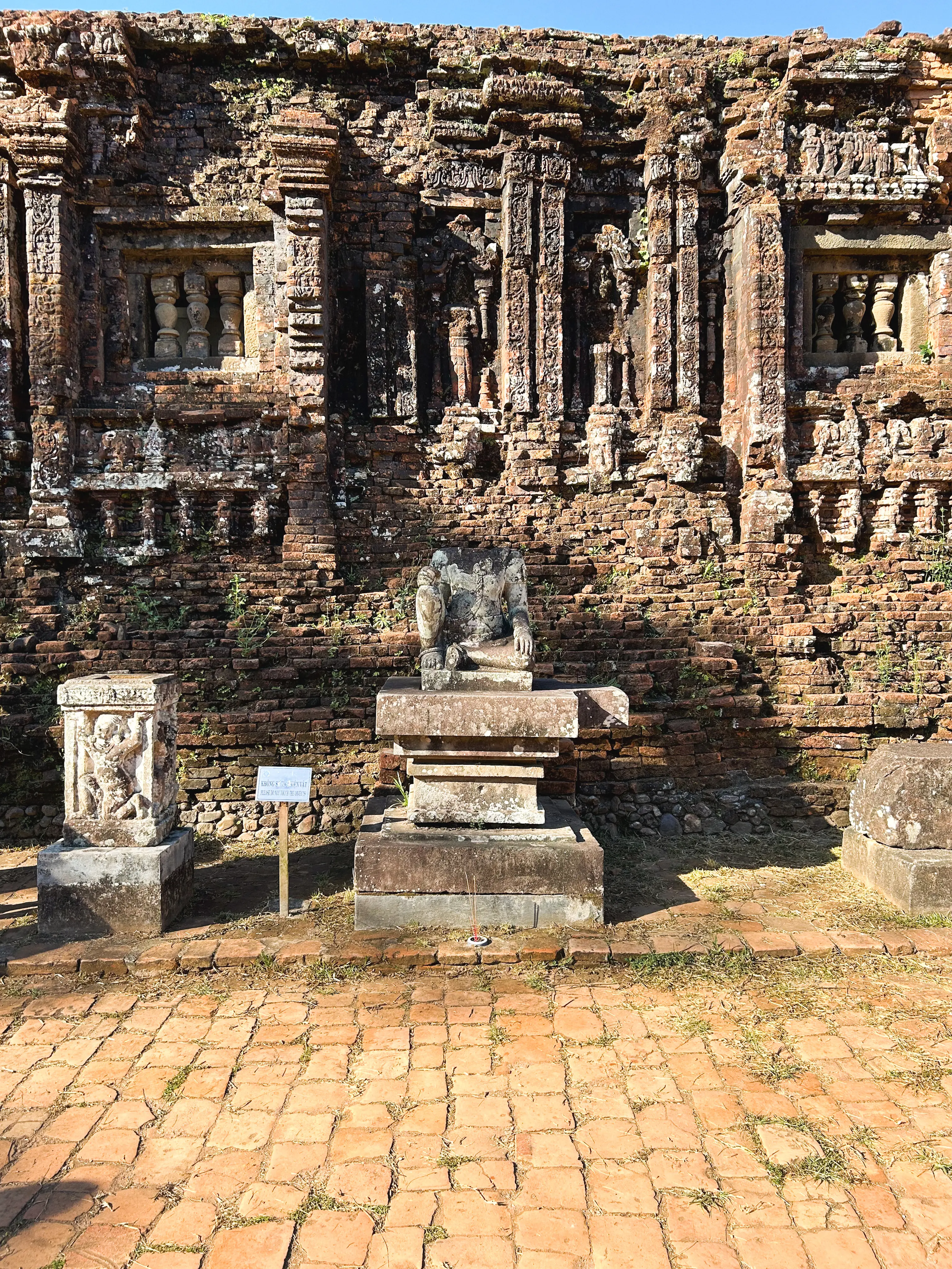
Decline and Rediscovery
My Son gradually declined in importance as the Champa Kingdom lost territory to the expanding Dai Viet (Vietnam) state. By the 13th century, the site was largely abandoned. It was rediscovered by French archaeologist Henri Parmentier in 1898, who began documenting and preserving the ruins.
War Damage
Tragically, My Son suffered extensive damage during the Vietnam War when the area was bombed by American forces who believed it harbored Viet Cong fighters. Many temples were completely destroyed, and bomb craters are still visible throughout the site.
Planning Your Day Trip
Getting There
From Da Nang
- Distance: Approximately 40 km (25 miles)
- Travel time: 1.5 hours each way
- Options:
- Private car/taxi: $40-50 USD round trip
- Organized tour: $30-40 USD per person
- Motorbike rental: $10-15 USD per day (for experienced riders only)
From Hoi An
- Distance: Approximately 30 km (19 miles)
- Travel time: 1 hour each way
- Options:
- Private car/taxi: $30-40 USD round trip
- Organized tour: $25-35 USD per person
- Motorbike rental: $10-15 USD per day (for experienced riders only)
Best Time to Visit
- Early morning (6-8 AM) to avoid crowds and midday heat
- Late afternoon (3-5 PM) for beautiful lighting, though more crowded
- Avoid rainy season (October-December) if possible, as paths can become muddy and slippery
Seasonal Notes:
- Dry Season (January-August): Ideal visiting conditions with clear skies and manageable temperatures, especially in the early morning. February to April offers the most pleasant weather.
- Shoulder Season (September): Can be good with fewer tourists, though occasional rain showers may occur.
- Rainy Season (October-December): Expect daily downpours, high humidity, and potentially difficult walking conditions. The lush green setting is beautiful, but photography can be challenging.
Entrance Fees
- Adults: 150,000 VND (approximately $6-7 USD)
- Children under 16: Free
- Additional fee for electric car from parking area to entrance: 30,000 VND ($1.20 USD)
What to Bring
- Comfortable walking shoes (the site is extensive)
- Sun protection (hat, sunscreen, light clothing)
- Mosquito repellent
- Water and snacks (options are limited on-site)
- Camera with extra batteries
- Cash for entrance fees and small purchases
Exploring the Sanctuary
Layout of the Site
My Son consists of eight groups of temples, labeled A through H by archaeologists. Most visitors follow a circular path that covers the main highlights:
- Group B, C & D: The most impressive concentration of structures, featuring the iconic towers visible in the photos
- Group A: Largely destroyed during the war, but historically significant
- Group G & E: Smaller but well-preserved structures with detailed carvings
- Group F & H: More remote areas, less frequently visited
As you can see from the images, the site is spread across a valley floor with different temple clusters in various states of preservation. Stone pathways connect the different groups, making navigation relatively easy while exploring.
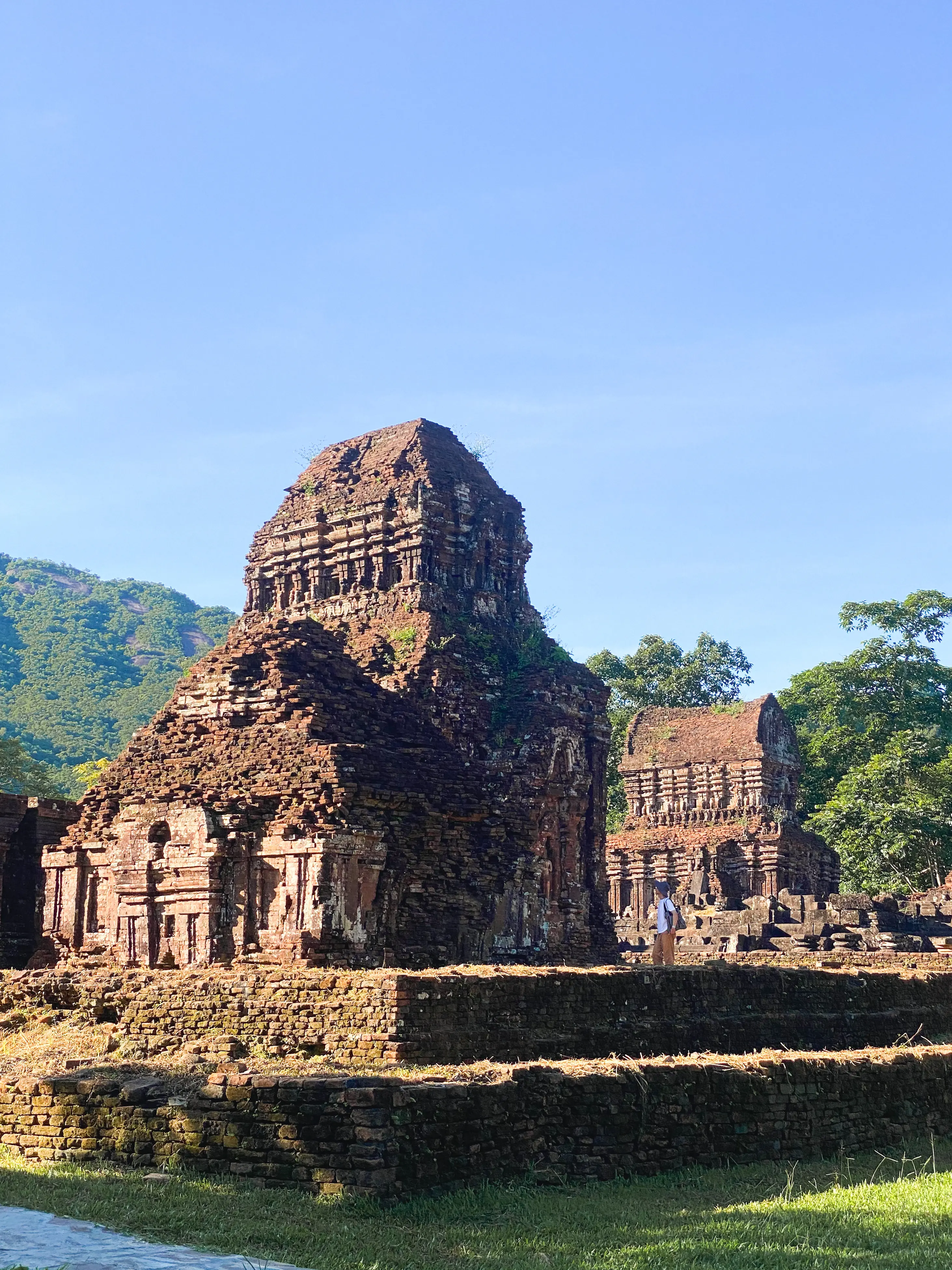
Must-See Structures
-
Group B’s Main Temple: The largest remaining structure, featuring intricate carvings
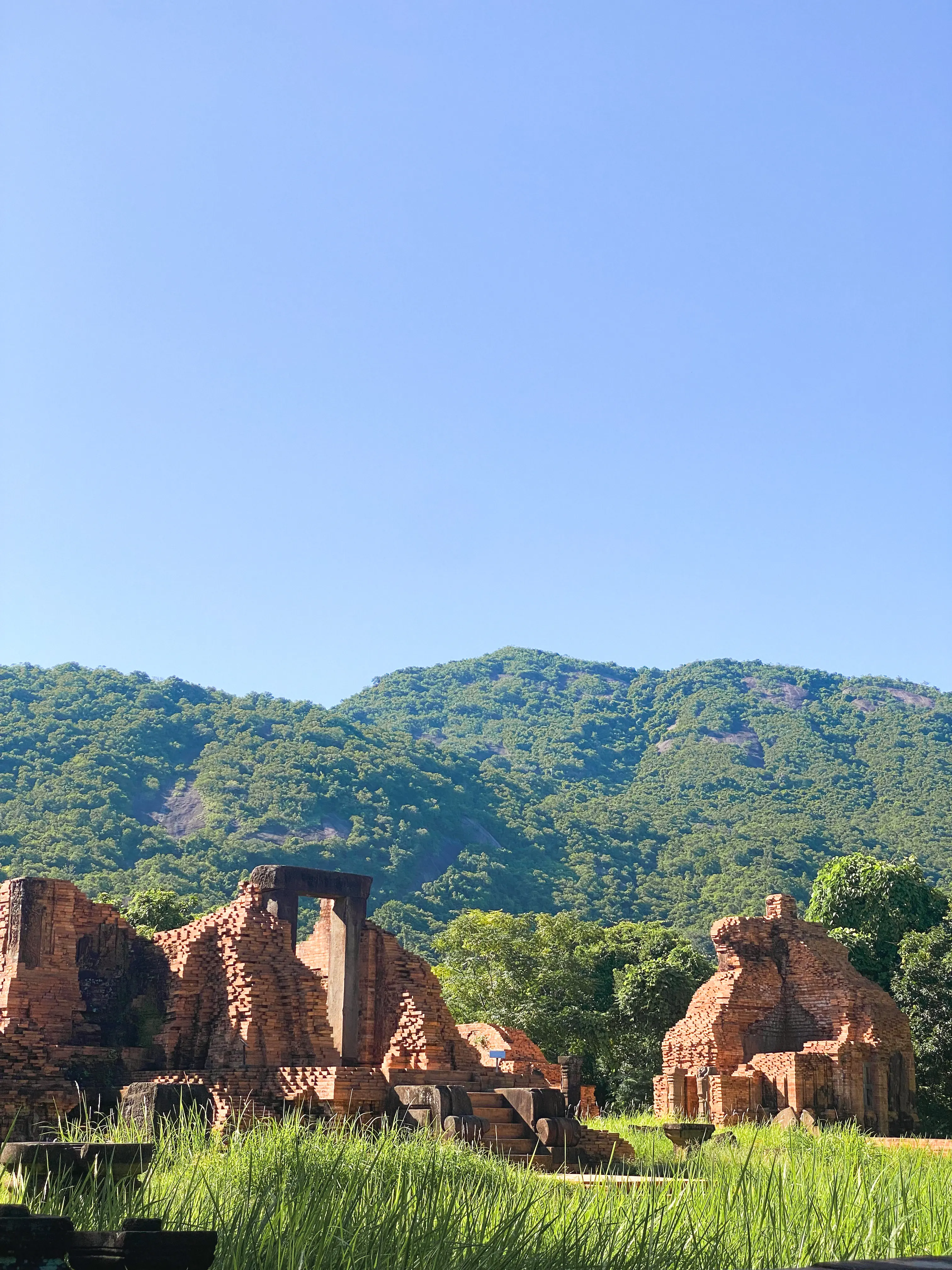
-
Linga and Yoni Shrines: Symbolic representations of divine energy and cosmic creation
-
Relief Carvings: Look for dancers, musicians, and mythological scenes
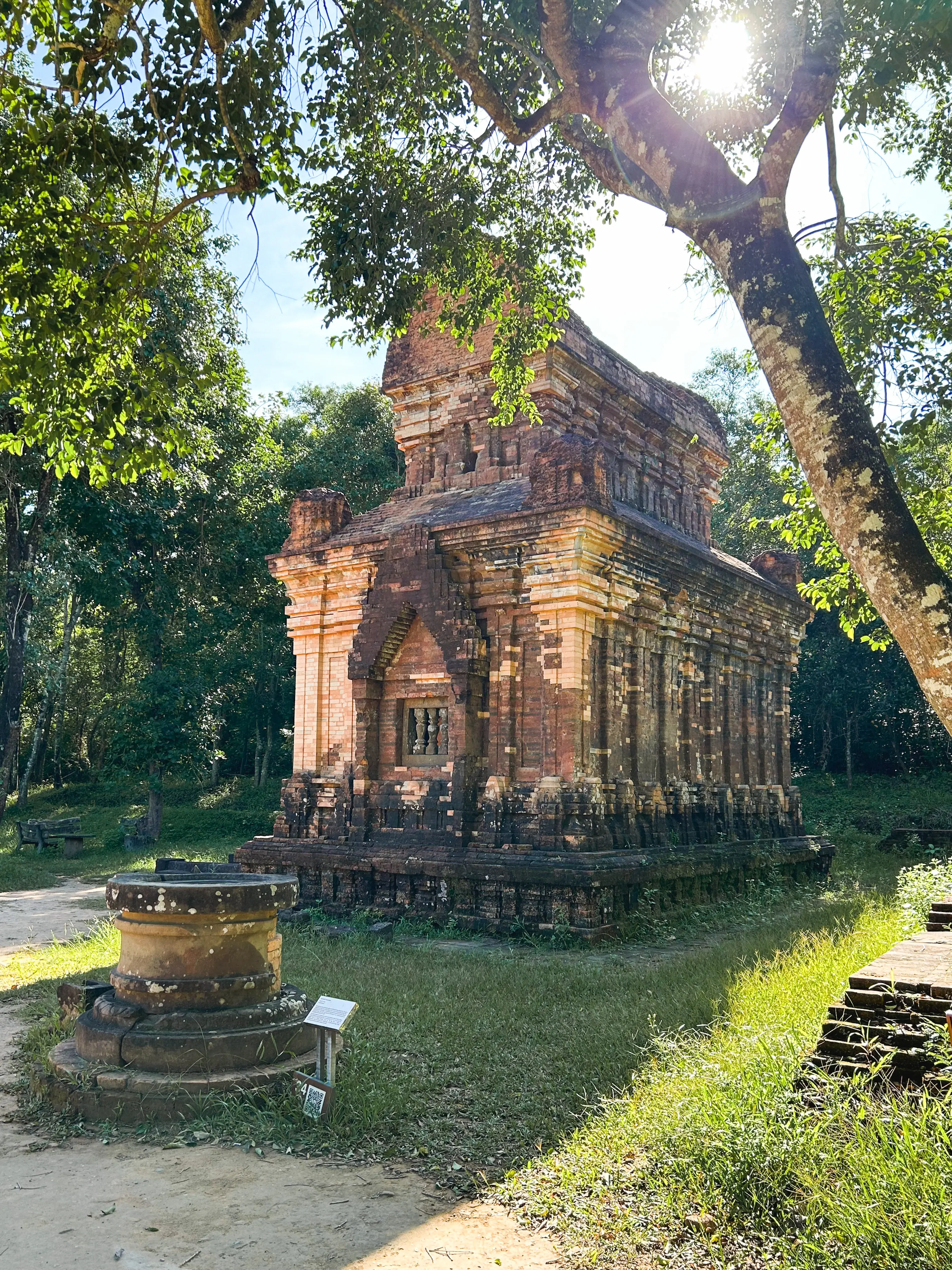
-
Stone Inscriptions: Ancient Sanskrit texts that have helped archaeologists understand the site’s history
-
On-Site Museum: Contains artifacts, historical information, and restoration details
import AdSenseMidContent from ’../../components/AdSenseMidContent.astro’;
Guided vs. Self-Guided Tours
- Guided tours provide valuable historical context and can point out easily missed details
- Self-guided exploration allows you to move at your own pace
- On-site placards provide basic information in multiple languages
- Consider hiring a local guide (available at the entrance for $10-15 USD) for a deeper understanding
Cultural Performances
A unique aspect of visiting My Son is the daily Cham cultural performances:
- Traditional music and dance shows held at the on-site theater
- Performance times: 9:45 AM and 10:45 AM
- Duration: Approximately 30 minutes
- Included in entrance fee
Practical Tips
Tour vs. Independent Travel
Organized Tours
- Pros: Convenient, includes transportation and guide, fixed price
- Cons: Fixed schedule, less flexibility, larger groups
Independent Travel
- Pros: Flexibility, personalized pace, can arrive early to avoid crowds
- Cons: Requires more planning, potentially higher cost
Photography Tips
- Early morning light creates stunning effects on the red brick structures
- Bring a wide-angle lens to capture entire temple groups
- Look for unique framing opportunities through doorways and windows
- Be respectful of ongoing restoration work
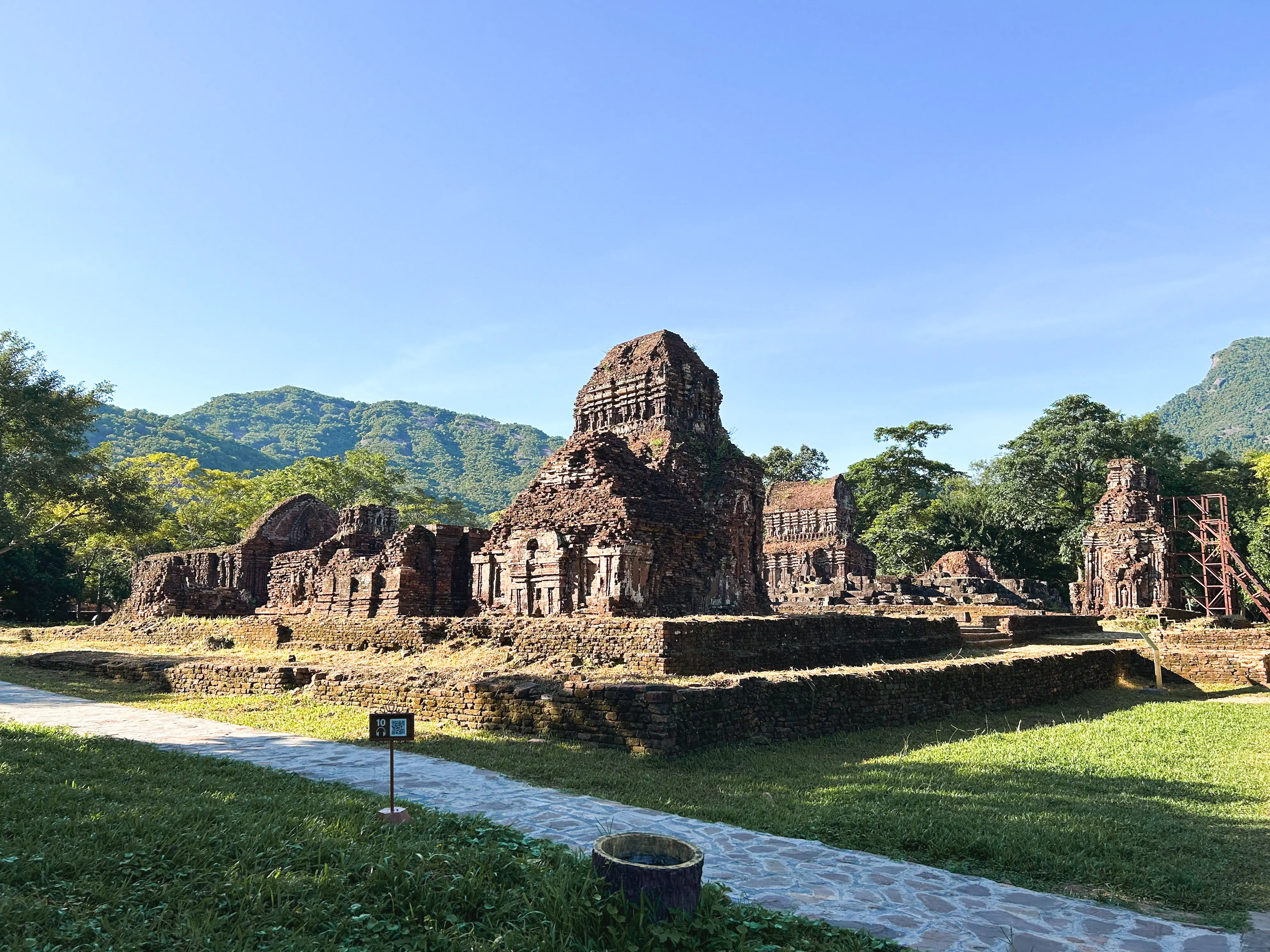
Combining with Other Attractions
For those looking to maximize their day trip, consider these combination itineraries:
From Da Nang
- Morning at My Son + afternoon at Marble Mountains or Ba Na Hills
From Hoi An
- Morning at My Son + afternoon exploring Tra Que Vegetable Village or Thanh Ha Pottery Village
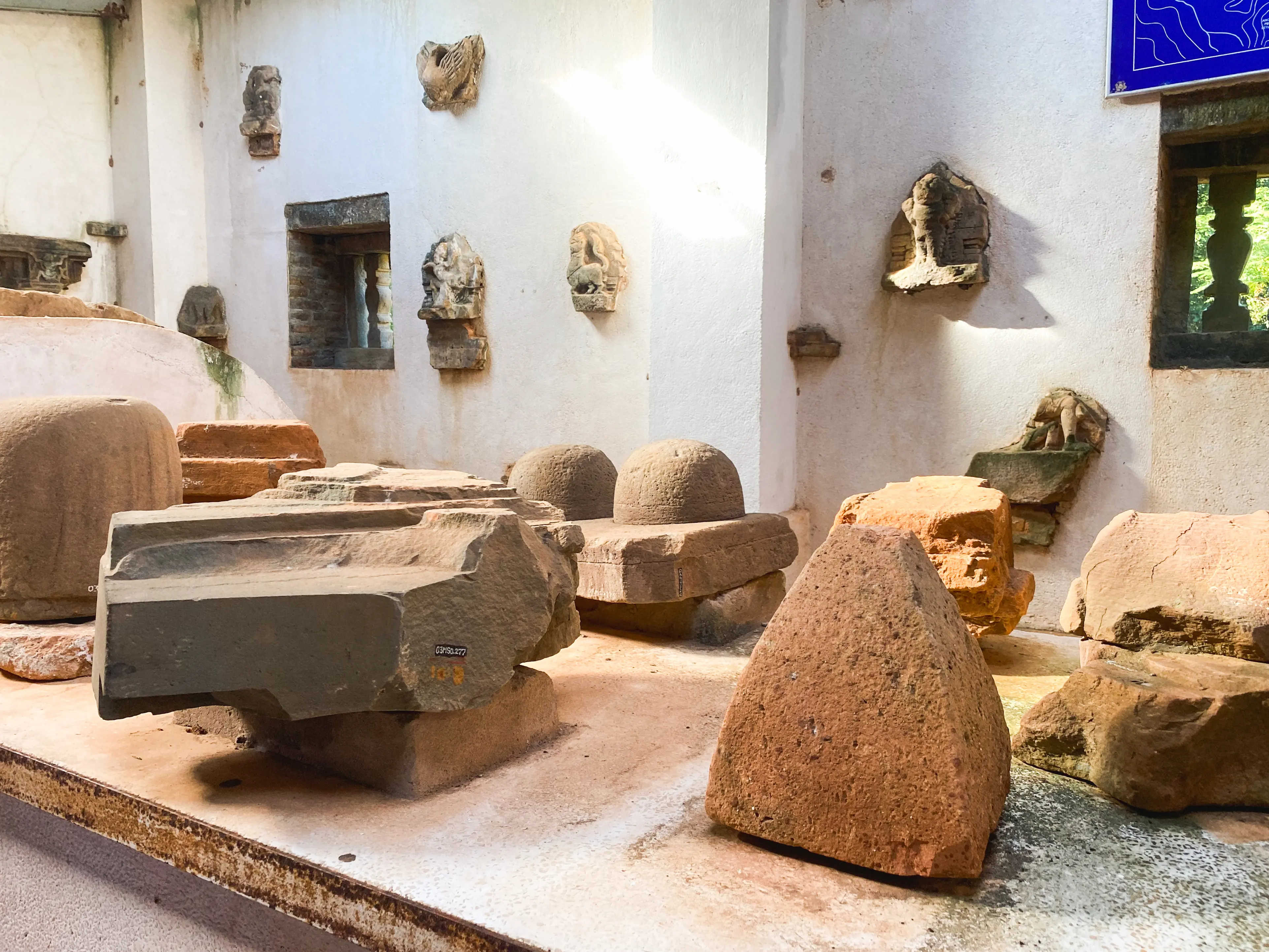
Conservation Efforts
My Son is an active archaeological site with ongoing conservation efforts:
- International teams from Italy, India, and Poland support Vietnam’s restoration work
- Some structures are closed temporarily for preservation
- Visitors can sometimes observe archaeologists and conservationists at work
Where to Stay
During my visit, I stayed at the My Son Heritage Resort And Spa, which is located very close to the sanctuary itself:
- Location: Mỹ Sơn, Duy Xuyên District, Quảng Nam, Vietnam
- Price: Excellent value at approximately $27 USD per night
- Features: The resort offers comfortable rooms and amenities, often with views of the surrounding countryside.
- Convenience: Its proximity to My Son Sanctuary makes it incredibly convenient for early morning or late afternoon visits to the site.
Staying right near the sanctuary allows for easy access and a more immersive experience.
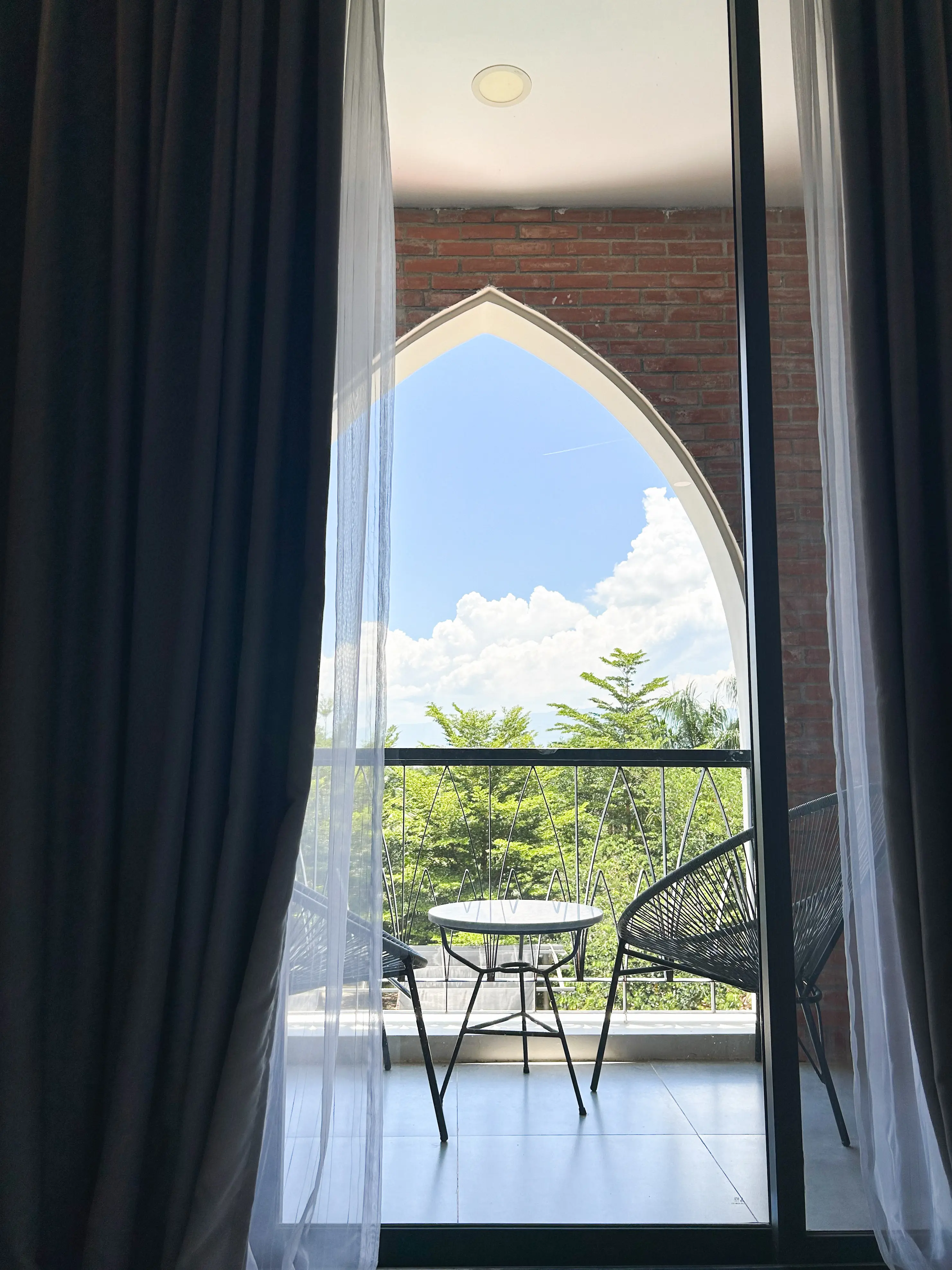
Sample Itinerary
Here’s a suggested timeline for a day trip from Hoi An:
- 5:30 AM: Depart Hoi An by private car or taxi
- 6:30 AM: Arrive at My Son Sanctuary, purchase tickets
- 6:45 AM: Begin exploration of the site, starting with Groups B, C & D
- 8:30 AM: Visit the on-site museum to understand the historical context
- 9:45 AM: Attend the Cham cultural performance
- 10:30 AM: Explore the remaining temple groups
- 12:00 PM: Depart My Son
- 1:00 PM: Return to Hoi An for lunch
Alternatively, if departing from Da Nang:
- 5:00 AM: Depart Da Nang
- 6:30 AM: Arrive at My Son
- Follow the same schedule as above
- 1:30 PM: Return to Da Nang
Frequently Asked Questions
How does My Son compare to Angkor Wat?
While much smaller than Cambodia’s Angkor complex, My Son offers a more intimate experience with fewer crowds. The architectural style is distinct, focusing on brick rather than stone construction. It’s worth visiting both to understand the different cultural influences in Southeast Asia.
How much time should I allow for visiting?
A minimum of 2-3 hours is recommended to properly explore the site and attend a cultural performance. History enthusiasts may want to allow up to 4 hours.
Is it suitable for children?
Older children interested in history will appreciate the site. For younger children, the walking paths and open spaces allow for exploration, though they may tire quickly in the heat. Consider bringing plenty of water and snacks.
Are there guides available on-site?
Yes, English-speaking guides are available at the entrance for around $10-15 USD and can significantly enhance your understanding of the site.
Is it accessible for visitors with mobility issues?
The main pathways are relatively flat, but there are some uneven surfaces and steps to reach certain temples. The electric cart from the parking area to the entrance helps with the initial approach.
Final Thoughts
My Son Sanctuary offers a profound connection to Vietnam’s ancient past—a civilization that predates many of the cultural landmarks that travelers associate with Vietnam today. While not as expansive as Cambodia’s Angkor or as well-preserved as Indonesia’s Borobudur, My Son’s intimate scale and continued restoration make it a moving testament to the artistic and spiritual achievements of the Cham people.
The site’s survival through centuries of weather, war, and neglect speaks to its cultural significance and the resilience of Vietnam’s diverse heritage. The dramatic setting, nestled in a lush valley surrounded by mountains, enhances the mystical atmosphere of these ancient temples. For travelers interested in Asian history, archaeology, or religious architecture, My Son Sanctuary is an essential addition to any central Vietnam itinerary.
If you’re planning a trip to central Vietnam, I highly recommend setting aside a morning to experience this remarkable window into the region’s pre-Vietnamese past. The early wake-up call is well worth the reward of experiencing these ancient temples in the gentle morning light, before the heat and crowds of midday arrive.
Have you visited My Son Sanctuary? Share your experience in the comments below! Or if you’re planning a trip and have questions, feel free to ask.